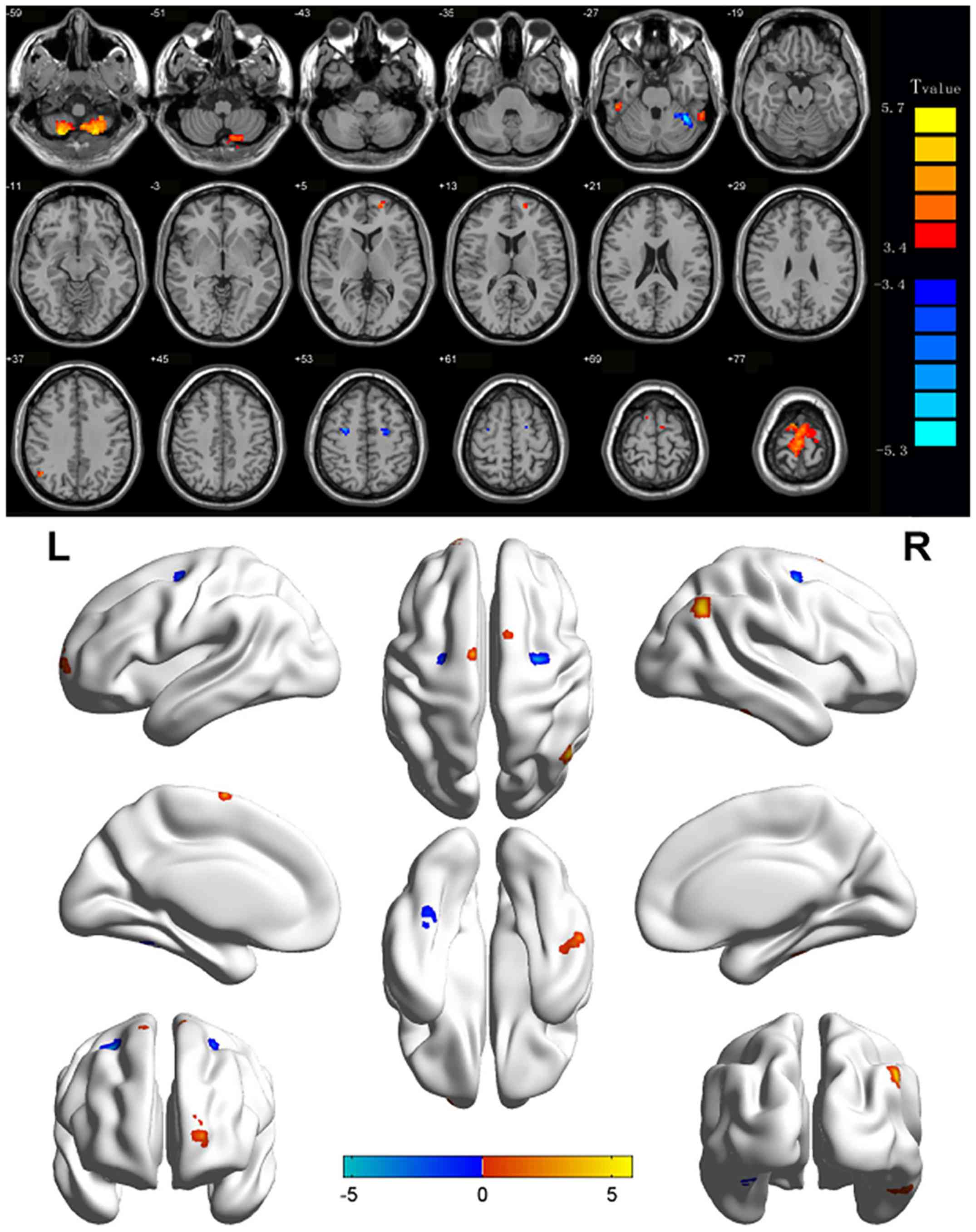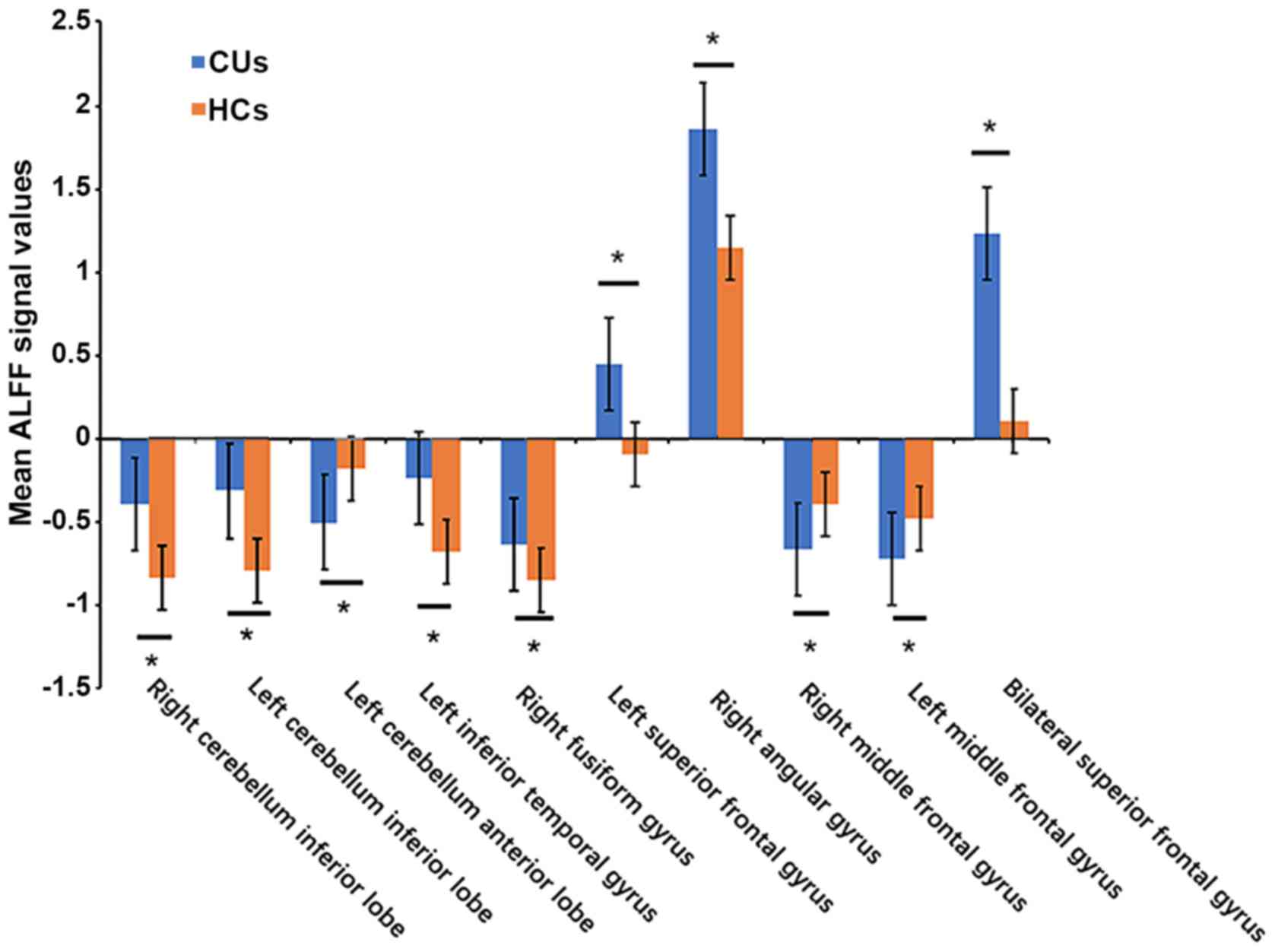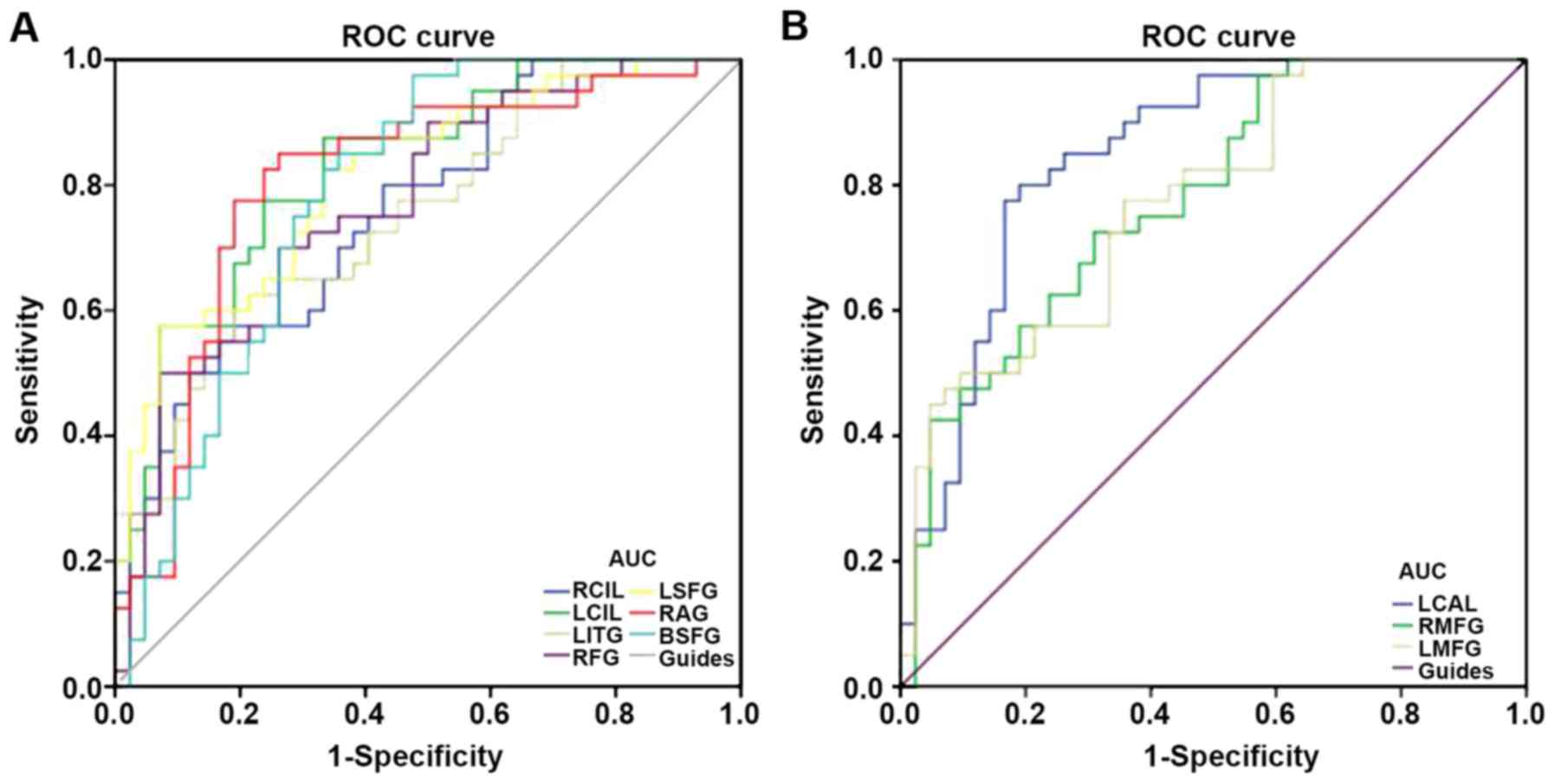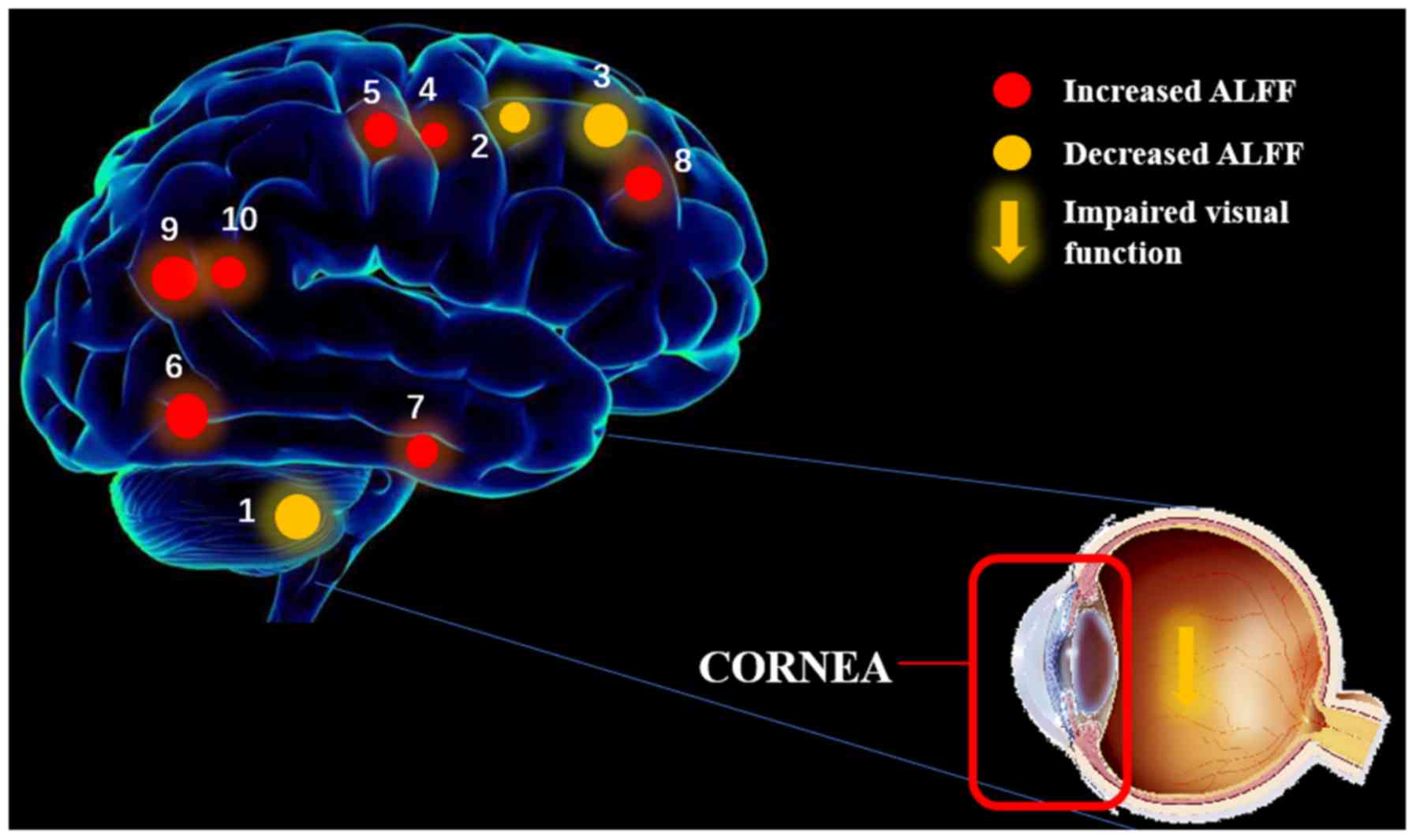|
1
|
Wu J, Zhang WS, Zhao J and Zhou HY: Review
of clinical and basic approaches of fungal keratitis. Int J
Ophthalmol. 9:1676–1683. 2016.PubMed/NCBI
|
|
2
|
World Health Organization, . Causes of
blindness and visual impairment. 2016.
|
|
3
|
Ngoie Maloba V, Ngayuna Nkiene J, Tunku
Kabamba G and Chenge Borasisi G: Frequency of corneal ulcer:
Retrospective study of 380 cases carried out in two centers in the
DR Congo. J Fr Ophtalmol. 41:57–51. 2018.(In French). View Article : Google Scholar : PubMed/NCBI
|
|
4
|
El Sheha H: Self-retained amniotic
membrane for dendritic keratitis. Ascrs. 2015.
|
|
5
|
Mascarenhas J, Lalitha P, Prajna NV,
Srinivasan M, Das M, D'Silva SS, Oldenburg CE, Borkar DS, Esterberg
EJ, Lietman TM and Keenan JD: Acanthamoeba, fungal, and bacterial
keratitis: A comparison of risk factors and clinical features. Am J
Ophthalmol. 157:56–62. 2014. View Article : Google Scholar : PubMed/NCBI
|
|
6
|
Thomas PA and Kaliamurthy J: Mycotic
keratitis: Epidemiology, diagnosis and management. Clin Microbiol
Infect. 19:210–220. 2013. View Article : Google Scholar : PubMed/NCBI
|
|
7
|
Bekiesińskafigatowska M, Helwich E,
Rutkowska M, Stankiewicz J and Terczyńska I: Magnetic resonance
imaging of neonates in the magnetic resonance compatible incubator.
Arch Med Sci. 12:1064–1070. 2016. View Article : Google Scholar : PubMed/NCBI
|
|
8
|
Liu H and Wang X: Correlation of iron
deposition and change of gliocyte metabolism in the basal ganglia
region evaluated using magnetic resonance imaging techniques: An in
vivo study. Arch Med Sci. 12:163–171. 2016. View Article : Google Scholar : PubMed/NCBI
|
|
9
|
Dai XJ, Liu CL, Zhou RL, Gong HH, Wu B,
Gao L and Wang YX: Long-term sleep deprivation decreases the
default spontaneous activity and connectivity pattern in healthy
male subjects: A resting-state fMRI study. Neuropsychiatr Dis
Treat. 11:761–772. 2015. View Article : Google Scholar : PubMed/NCBI
|
|
10
|
Biswal BB: Resting state fMRI: A personal
history. Neuroimage. 62:938–944. 2012. View Article : Google Scholar : PubMed/NCBI
|
|
11
|
Zhang Y, Zhu C, Chen H, Duan X, Lu F, Li
M, Liu F, Ma X, Wang Y, Zeng L, et al: Frequency-dependent
alterations in the amplitude of low-frequency fluctuations in
social anxiety disorder. J Affect Disord. 174:329–335. 2015.
View Article : Google Scholar : PubMed/NCBI
|
|
12
|
Zuo XN, Di Martino A, Kelly C, Shehzad ZE,
Gee DG, Klein DF, Castellanos FX, Biswal BB and Milham MP: The
oscillating brain: Complex and reliable. Neuroimage. 49:1432–1445.
2010. View Article : Google Scholar : PubMed/NCBI
|
|
13
|
Huang X, Cai FQ, Hu PH, Zhong YL, Zhang Y,
Wei R, Pei CG, Zhou FQ and Shao Y: Disturbed spontaneous
brain-activity pattern in patients with optic neuritis using
amplitude of low-frequency fluctuation: A functional magnetic
resonance imaging study. Neuropsychiatr Dis Treat. 11:3075–3083.
2015.PubMed/NCBI
|
|
14
|
Huang X, Zhong YL, Zeng XJ, Zhou F, Liu
XH, Hu PH, Pei CG, Shao Y and Dai XJ: Disturbed spontaneous brain
activity pattern in patients with primary angle-closure glaucoma
using amplitude of low-frequency fluctuation: A fMRI study.
Neuropsychiatr Dis Treat. 11:1877–1883. 2015.PubMed/NCBI
|
|
15
|
Tan G, Huang X, Zhang Y, Wu AH, Zhong YL,
Wu K, Zhou FQ and Shao Y: A functional MRI study of altered
spontaneous brain activity pattern in patients with congenital
comitant strabismus using amplitude of low-frequency fluctuation.
Neuropsychiatr Dis Treat. 12:1243–1250. 2016.PubMed/NCBI
|
|
16
|
Satterthwaite TD, Elliott MA, Gerraty RT,
Gerraty RT, Ruparel K, Loughead J, Calkins ME, Eickhoff SB,
Hakonarson H, Gur RC, Gur RE and Wolf DH: An improved framework for
confound regression and filtering for control of motion artifact in
the preprocessing of resting-state functional connectivity data.
Neuroimage. 64:240–256. 2013. View Article : Google Scholar : PubMed/NCBI
|
|
17
|
Yan CG, Cheung B, Kelly C, Colcombe S,
Craddock RC, Di Martino A, Li Q, Zuo XN, Castellanos FX and Milham
MP: A comprehensive assessment of regional variation in the impact
of head micromovements on functional connectomics. Neuroimage.
76:183–201. 2013. View Article : Google Scholar : PubMed/NCBI
|
|
18
|
Fox MD, Snyder AZ, Vincent JL, Corbetta M,
Van Essen DC and Raichle ME: The human brain is intrinsically
organized into dynamic, anticorrelated functional networks. Proc
Natl Acad Sci USA. 102:9673–9678. 2005. View Article : Google Scholar : PubMed/NCBI
|
|
19
|
Li HJ, Dai XJ, Gong HH, Nie X, Zhang W and
Peng DC: Aberrant spontaneous low-frequency brain activity in male
patients with severe obstructive sleep apnea revealed by
resting-state functional MRI. Neuropsychiatr Dis Treat. 11:207–214.
2015.PubMed/NCBI
|
|
20
|
Dai XJ, Peng DC, Gong HH, Wan AL, Nie X,
Li HJ and Wang YX: Altered intrinsic regional brain spontaneous
activity and subjective sleep quality in patients with chronic
primary insomnia: A resting--state fMRI study. Neuropsychiatr Dis
Treat. 10:2163–2175. 2014. View Article : Google Scholar : PubMed/NCBI
|
|
21
|
Saad ZS, Gotts SJ, Murphy K, Chen G, Jo
HJ, Martin A and Cox RW: Trouble at rest: How correlation patterns
and group differences become distorted after global signal
regression. Brain Connect. 2:25–32. 2012. View Article : Google Scholar : PubMed/NCBI
|
|
22
|
Zang YF, He Y, Zhu CZ, Cao QJ, Sui MQ,
Liang M, Tian LX, Jiang TZ and Wang YF: Altered baseline brain
activity in children with ADHD revealed by resting-state functional
MRI. Brain Dev. 29:83–91. 2007. View Article : Google Scholar : PubMed/NCBI
|
|
23
|
Siddharth K, Michael AM, Cahill ND, Kiehl
KA, Pearlson G, Baum SA and Calhoun VD: ICA-fNORM: Spatial
normalization of fMRI data using intrinsic group-ICA networks.
Front Syst Neurosci. 5:932011.PubMed/NCBI
|
|
24
|
Japee S, Holiday K, Satyshur MD, Mukai I
and Ungerleider LG: A role of right middle frontal gyrus in
reorienting of attention: A case study. Front Syst Neurosci.
9:232015. View Article : Google Scholar : PubMed/NCBI
|
|
25
|
Morgan HM, Jackson MC, van Koningsbruggen
MG, Shapiro KL and Linden DE: Frontal and parietal theta burst TMS
impairs working memory for visual-spatial conjunctions. Brain
Stimul. 6:122–129. 2013. View Article : Google Scholar : PubMed/NCBI
|
|
26
|
Chang CC, Yu SC, Mcquoid DR, Messer DF,
Taylor WD, Singh K, Boyd BD, Krishnan KR, MacFall JR, Steffens DC
and Payne ME: Reduction of dorsolateral prefrontal cortex gray
matter in late-life depression. Psychiatry Res. 193:1–6. 2011.
View Article : Google Scholar : PubMed/NCBI
|
|
27
|
Nelson JD, Craig JP, Akpek EK, Azar DT,
Belmonte C, Bron AJ, Clayton JA, Dogru M, Dua HS, Foulks GN, et al:
TFOS DEWS II introduction. Ocul Surf. 15:269–275. 2017. View Article : Google Scholar : PubMed/NCBI
|
|
28
|
Leat SJ: A proposed model for integrated
low-vision rehabilitation services in Canada. Optom Vis Sci.
93:77–84. 2016.PubMed/NCBI
|
|
29
|
Bruce ML and Hoff RA: Social and physical
health risk factors for first-onset major depressive disorder in a
community sample. Soc Psychiatry Psychiatr Epidemiol. 29:165–171.
1994.PubMed/NCBI
|
|
30
|
Ferrari C, Oldrati V, Gallucci M, Vecchi T
and Cattaneo Z: The role of the cerebellum in explicit and
incidental processing of facial emotional expressions: A study with
transcranial magnetic stimulation. Neuroimage. 169:256–264. 2018.
View Article : Google Scholar : PubMed/NCBI
|
|
31
|
Adamaszek M, D'Agata F, Ferrucci R, Habas
C, Keulen S, Kirkby KC, Leggio M, Mariën P, Molinari M, Moulton E,
et al: Consensus paper: Cerebellum and emotion. Cerebellum.
16:552–576. 2017. View Article : Google Scholar : PubMed/NCBI
|
|
32
|
Kilts CD, Kelsey JE, Knight B, Ely TD,
Bowman FD, Gross RE, Selvig A, Gordon A, Newport DJ and Nemeroff
CB: The neural correlates of social anxiety disorder and response
to pharmacotherapy. Neuropsychopharmacology. 31:2243–2253. 2006.
View Article : Google Scholar : PubMed/NCBI
|
|
33
|
Dien J, Brian ES, Molfese DL and Gold BT:
Combined ERP/fMRI evidence for early word recognition effects in
the posterior inferior temporal gyrus. Cortex. 49:2307–2321. 2013.
View Article : Google Scholar : PubMed/NCBI
|
|
34
|
Stoeter P, Bauermann T, Nickel R, Corluka
L, Gawehn J, Vucurevic G, Vossel G and Egle UT: Cerebral activation
in patients with somatoform pain disorder exposed to pain and
stress: An fMRI study. Neuroimage. 36:418–430. 2007. View Article : Google Scholar : PubMed/NCBI
|
|
35
|
James CE, Oechslin MS, Van De Ville D,
Hauert CA, Descloux C and Lazeyras F: Musical training yields
opposite effects on grey matter density in cognitive versus
sensorimotor networks. Brain Struct Funct. 219:353–366. 2014.
View Article : Google Scholar : PubMed/NCBI
|
|
36
|
Weiner KS: On (ab)normality: Einstein's
fusiform gyrus. Brain Cogn. 94:1–3. 2015. View Article : Google Scholar : PubMed/NCBI
|
|
37
|
Caspers J, Palomero-Gallagher N, Caspers
S, Schleicher A, Amunts K and Zilles K: Receptor architecture of
visual areas in the face and word-form recognition region of the
posterior fusiform gyrus. Brain Struct Funct. 220:205–219. 2015.
View Article : Google Scholar : PubMed/NCBI
|
|
38
|
Jiang F, Dricot L, Weber J, Righi G, Tarr
MJ, Goebel R and Rossion B: Face categorization in visual scenes
may start in a higher order area of the right fusiform gyrus:
Evidence from dynamic visual stimulation in neuroimaging. J
Neurophysiol. 106:2720–36. 2011. View Article : Google Scholar : PubMed/NCBI
|
|
39
|
Yazar Y, Bergström ZM and Simons JS:
Continuous theta burst stimulation of angular gyrus reduces
subjective recollection. PLoS One. 9:e1104142014. View Article : Google Scholar : PubMed/NCBI
|
|
40
|
Makris N, Preti MG, Wassermann D, Rathi Y,
Papadimitriou GM, Yergatian C, Dickerson BC, Shenton ME and Kubicki
M: Human middle longitudinal fascicle: Segregation and
behavioral-clinical implications of two distinct fiber connections
linking temporal pole and superior temporal gyrus with the angular
gyrus or superior parietal lobule using multi-tensor tractography.
Brain Imaging Behav. 7:335–352. 2013. View Article : Google Scholar : PubMed/NCBI
|
|
41
|
Bocca F, Töllner T, Müller HJ and Taylor
PC: The right angular gyrus combines perceptual and
response-related expectancies in visual search: TMS-EEG evidence.
Brain Stimul. 8:816–822. 2015. View Article : Google Scholar : PubMed/NCBI
|
|
42
|
Goldberg I, Harel M and Malach R: When the
brain loses its self: Prefrontal inactivation during sensorimotor
processing. Neuron. 50:329–339. 2006. View Article : Google Scholar : PubMed/NCBI
|
|
43
|
Fried I, Wilson C, MacDonald K and Behnke
EJ: Electric current stimulates laughter. Nature. 391:6501998.
View Article : Google Scholar : PubMed/NCBI
|
|
44
|
Guo MX, Dong HH, Zhang YT, Zhang Q and Yin
XH: ALFF changes in brain areas of human with high myopia revealed
by resting-state functional MRI. International Conference on
Biomedical Engineering and Informatics. IEEE. 91–94. 2010.
|
|
45
|
Li Q, Xin H, Lei Y, Wei R, Zhang Y, Zhong
YL, Jiang N and Shao Y: Altered spontaneous brain activity pattern
in patients with late monocular blindness in middle-age using
amplitude of low-frequency fluctuation: A resting-state functional
MRI study. Clin Interv Aging. 11:1773–1780. 2016. View Article : Google Scholar : PubMed/NCBI
|
|
46
|
Tan G, Huang X, Ye L, Wu AH, He LX, Zhong
YL, Jiang N, Zhou FQ and Shao Y: Altered spontaneous brain activity
patterns in patients with unilateral acute open globe injury using
amplitude of low-frequency fluctuation: A functional magnetic
resonance imaging study. Neuropsychiatr Dis Treat. 12:2015–2020.
2016. View Article : Google Scholar : PubMed/NCBI
|
|
47
|
Wang ZL, Zou L, Lu ZW, Xie XQ, Jia ZZ, Pan
CJ, Zhang GX and Ge XM: Abnormal spontaneous brain activity in type
2 diabetic retinopathy revealed by amplitude of low-frequency
fluctuations: A resting-state fMRI study. Clin Radiol.
72:340.e1–340.e7. 2017. View Article : Google Scholar
|
|
48
|
Liang M, Xie B, Yang H, Yu L, Yin X, Wei L
and Wang J: Distinct patterns of spontaneous brain activity between
children and adults with anisometropic amblyopia: A resting-state
fMRI study. Graefes Arch Clin Exp Ophthalmol. 254:569–576. 2016.
View Article : Google Scholar : PubMed/NCBI
|
|
49
|
Pan ZM, Li HJ, Bao J, Jiang N, Yuan Q,
Freeberg S, Zhu PW, Ye L, Ma MY, Huang X and Shao Y: Altered
intrinsic brain activities in patients with acute eye pain using
amplitude of low-frequency fluctuation: A resting-state fMRI study.
Neuropsychiatr Dis Treat. 14:251–257. 2018. View Article : Google Scholar : PubMed/NCBI
|













